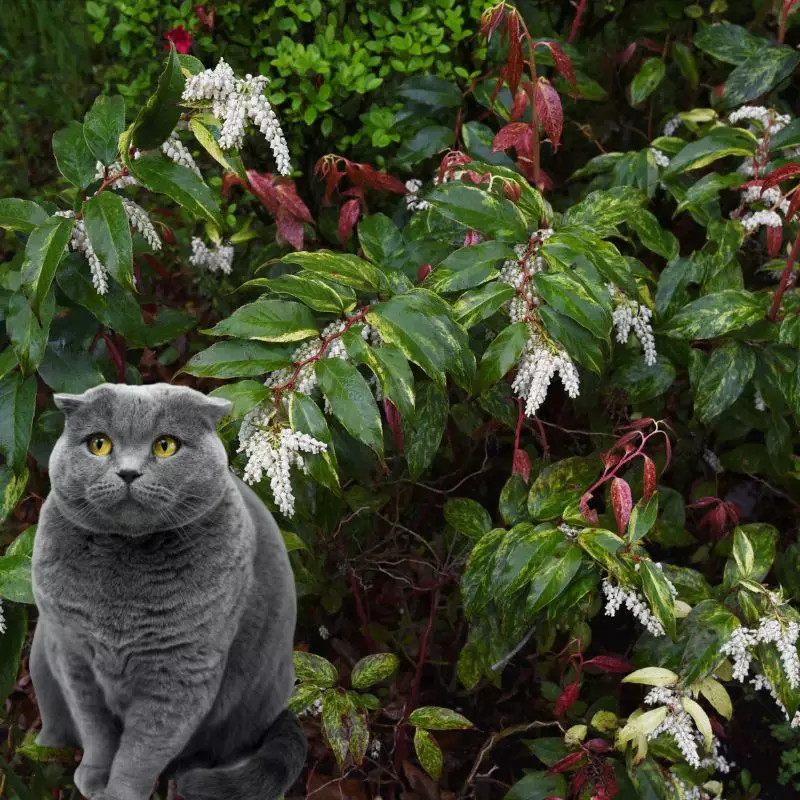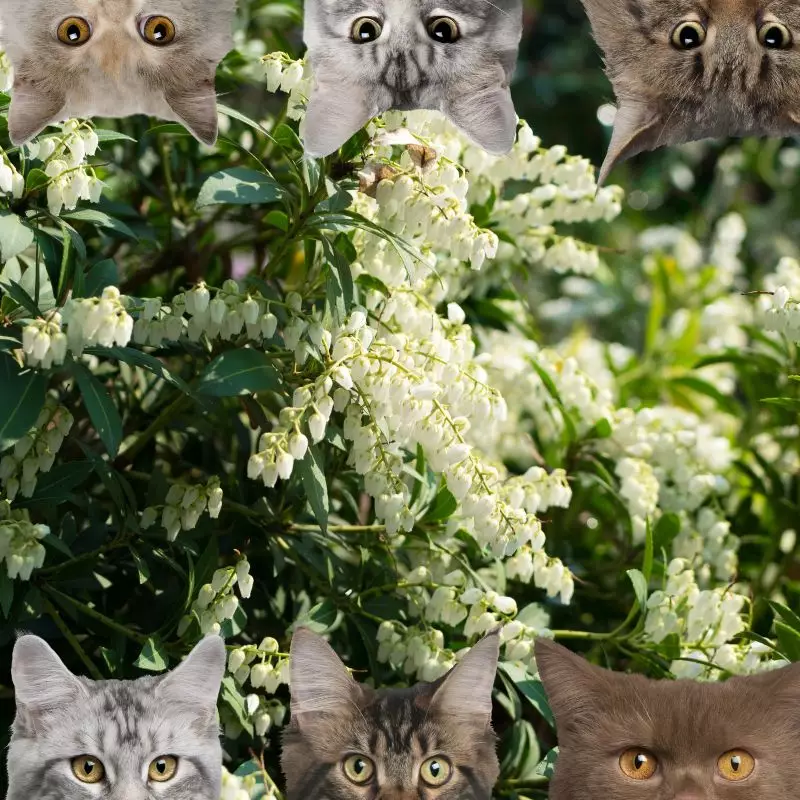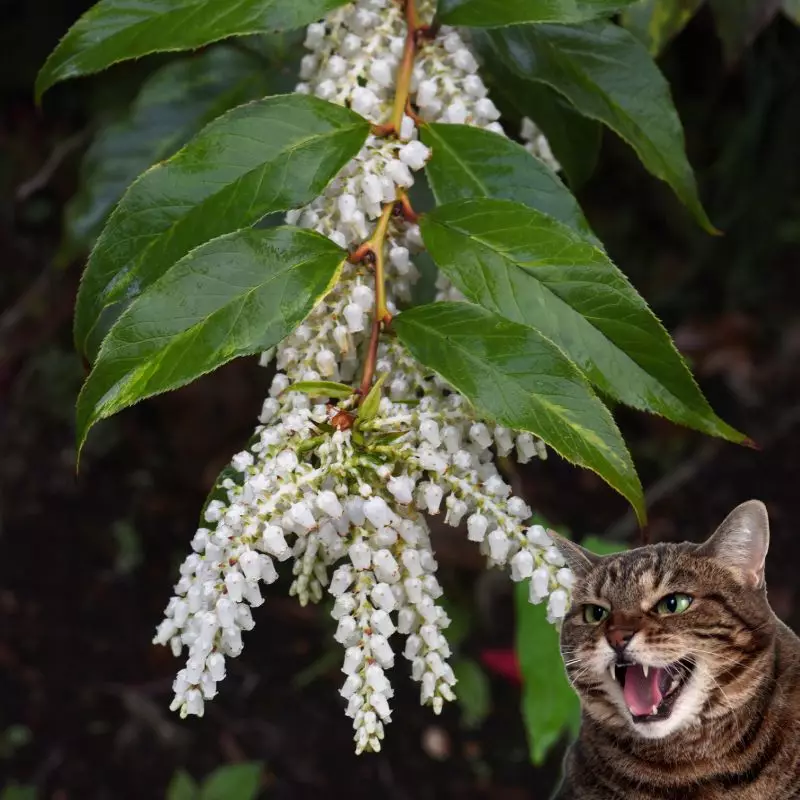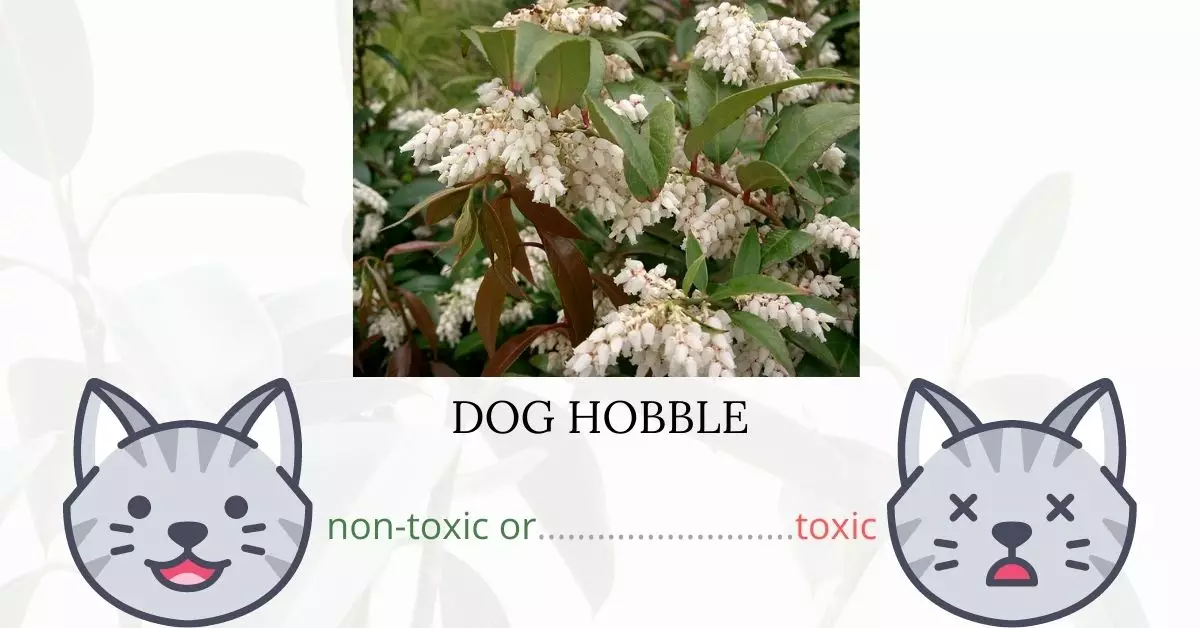Yes, Dog Hobble is toxic to cats. Commonly known by other names such as Dog Laurel, Fetter Bush, and Black Laurel, this evergreen shrub contains compounds like arbutin glucoside and various grayanotoxins, including andromedotoxin, acetylandromedol, rhodotoxin, and asebotoxin. When ingested by cats, these toxins can inhibit sodium channels from deactivating by attaching to them in the body’s cells. This action can lead to a series of serious health impacts, potentially culminating in cardiac arrest and respiratory failure.
This article was composed in collaboration with a team of experienced DVMs (doctors of veterinary medicine). Their insights and expertise have ensured that we present accurate and up-to-date information regarding the risks associated with plants, particularly Dog Hobble, and their effects on cats. Furthermore, to guarantee the reliability of our content, we have conducted research using high-authority sources such as the ASPCA and PetMD.
Clinical Signs of Dog Hobble Poisoning in Cats

If a cat comes into contact with, inhales the scent, or ingests the Dog Hobble plant, it can exhibit various clinical symptoms. The extent of these symptoms is largely influenced by the amount of the plant consumed. It’s essential to understand that while poisoning incidents from Dog Hobble in cats are infrequent, they are serious and can be fatal. Let’s delve deeper into the symptoms and understand the reasons behind each:
- Excessive Salivation: This occurs due to the immediate irritation caused by the plant’s toxins on the oral tissues, signaling the body to produce more saliva as a protective mechanism.
- Perspiration around the Nose and on Foot Pads: The toxins affect the cat’s autonomic nervous system, leading to increased perspiration as the body tries to expel toxins.
- Vomiting & Diarrhea: The toxins from the plant can irritate the gastrointestinal tract, prompting the body to expel them through vomiting and diarrhea.
- Dizziness, Weakness, & Twitching: These symptoms are indicators of the neurological impacts of the toxins, affecting the cat’s central nervous system.
- Tingling or Burning Sensation in the Extremities and around the Mouth: This results from the direct effect of the toxins on nerve endings, creating sensations of tingling and burning.
- Low Blood Pressure & Sinus Bradycardia: The toxins can lead to reduced heart rate and subsequent lowering of blood pressure, affecting the circulation and oxygen delivery in the cat’s body.
For cats that ingest a significant amount of Dog Hobble, more severe symptoms arise:
- Severe Muscular Weakness: This can be attributed to the disruption in normal nerve function, affecting muscle control and strength.
- Bradycardia: A further reduction in heart rate, which can have life-threatening consequences if not treated immediately.
- Ventricular Tachycardia & Nodal Rhythm or Wolff-Parkinson-White Syndrome: These are severe cardiac abnormalities caused by the profound impact of the toxins on the heart’s electrical system.
- Coma: Due to significant neurological and systemic disturbances, a cat can slip into a coma, a deep state of unconsciousness.
- Death: In severe cases and without timely intervention, the combined effects of these symptoms can sadly lead to the death of the affected cat.
If you notice any of these symptoms in your cat after contact with Dog Hobble, it’s imperative to seek immediate veterinary care.
First Aid and Treatment of Dog Hobble Poisoning in Cats

Supportive care and treatment of symptoms as they emerge are the best ways to help a cat survive dog hobble poisoning.
Antiemetics may be prescribed by the veterinarian to assist the cat stop vomiting. Intravenous fluids may also be used to help the cat’s body maintain its fluid volume. Throughout the treatment, the cat’s heartbeat should be checked. An IV injection of atropine may be given to help regulate the heart rate. Vasopressors can be also administered to constrict blood arteries and thereby raise blood pressure. If ingestion of dog hobble is just recent, administering activated charcoal to your cat can help bind the toxins in the stomach, and pass it through waste.
Recovery from Dog Hobble Poisoning in Cats

Grayanotoxins, such as those found in the dog hobble plant, are generally fatal to cats because of how quickly they shut down the body. Symptoms might last anywhere from a few hours to many days. If the cat survives the experience, the poisoning should have no long-term consequences.
Prevention of Dog Hobble Poisoning in Cats
If you live in an area where the dog hobble plant is common, keeping your cat indoors will limit your cat’s exposure to it. While removing the dog hobble shrub from your yard lessens the chances of your cat encountering it, it is still possible that your cat will come into touch with it in other gardens or outside. Learn about the plants that can endanger your cat so you will have an idea in case of an emergency.
If you love plants but have cats at home, check out these lists:





